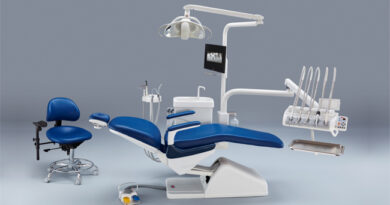Navigating Discomfort: Recognizing and Addressing Signs of Mastitis
Introduction
Breastfeeding is a profoundly nurturing experience that fosters a strong bond between a mother and her baby. However, amidst this beautiful journey, some mothers encounter challenges that can disrupt their breastfeeding experience. One such challenge is mastitis – an inflammation of the breast tissue that can bring discomfort and pain to breastfeeding mothers. In this article, we will delve into the intricacies of mastitis, exploring its signs, causes, and effective strategies for recognizing and addressing this condition.
Understanding Mastitis: What You Need to Know
Mastitis, often referred to as “breast infection,” is a condition that occurs during breastfeeding, causing pain, inflammation, and sometimes infection in the breast tissue. It typically affects only one breast and can arise due to a variety of reasons, including blocked milk ducts, bacteria entering the breast, or even a combination of these factors. Recognizing the signs of mastitis is crucial in order to seek timely treatment and ensure both the mother’s well-being and the continuation of breastfeeding.
Recognizing the Signs: Key Indicators of Mastitis
Early detection of mastitis relies on a keen awareness of its symptoms. These signs can vary in intensity but are generally consistent in their presentation. Breast pain, redness, warmth to the touch, and swelling are often experienced. In some cases, flu-like symptoms such as fever, chills, and body aches may accompany these physical indicators. These signals should not be ignored, as they serve as the body’s way of communicating that intervention is needed.
Addressing Mastitis: The Importance of Prompt Action
Responding promptly to suspected mastitis is essential for effective management. Delaying treatment can lead to increased discomfort and potential complications. Engaging in early intervention can often lead to a quicker resolution of the condition, allowing mothers to regain comfort and continue breastfeeding without disruption.
Rest and Hydration: Prioritizing Self-Care
Rest and hydration play a pivotal role in supporting the body’s natural defense mechanisms. Adequate rest allows the immune system to concentrate its efforts on combating infection, while staying well-hydrated ensures optimal bodily functions. These actions can collectively contribute to a stronger immune response.
Continuing to Breastfeed: Emptying the Breast
Contrary to popular belief, breastfeeding should not cease when mastitis arises. In fact, emptying the affected breast through breastfeeding or pumping can aid in symptom relief and resolution. Breast milk contains antibacterial properties that can help combat the infection, making it a natural ally in the fight against mastitis.
Correct Latch and Positioning: Preventing Recurrence
Proper latch and comfortable breastfeeding positions are essential not only for successful breastfeeding but also for preventing the recurrence of mastitis. Incorrect latch or prolonged engorgement can lead to blocked milk ducts, which in turn can trigger inflammation. By mastering these techniques, mothers can significantly reduce their risk of experiencing mastitis again.
Warm Compresses and Massages: Easing Discomfort
Warm compresses and gentle massages are simple yet effective ways to alleviate pain and promote improved milk flow. Warmth from a compress can help reduce inflammation, while massaging the affected breast can assist in dislodging any blockages. Incorporating these methods into the daily routine can provide welcome relief.
Seeking Medical Attention: When to Consult a Professional
While self-care is valuable, it’s important to recognize when professional medical attention is necessary.
Contacting a Healthcare Provider: Expert Guidance
If the symptoms of mastitis persist or worsen despite diligent self-care, it’s advisable to consult a healthcare provider. Medical professionals can accurately diagnose the condition and recommend appropriate treatments, which might include antibiotics in cases of bacterial infection.
Prevention for the Future: Maintaining Breast Health
After successfully navigating through mastitis, adopting practices that promote breast health can reduce the likelihood of its recurrence.
Wearing Comfortable and Supportive Bras
Wearing comfortable and supportive bras is crucial in preventing undue pressure on the breasts. Ill-fitting bras can contribute to blocked ducts, increasing the risk of mastitis.
Practicing Good Hygiene
Maintaining proper hygiene is essential for overall breast health. Regular cleansing can help prevent the entry of bacteria into the breast tissue, reducing the risk of infection.
Conclusion
In the intricate tapestry of motherhood, breastfeeding holds a special place, fostering a connection that’s both unique and profound. Navigating the challenges that may arise, such as mastitis, is part of this journey. By recognizing the signs of mastitis, mothers can take proactive steps to address the condition, ensuring their comfort and the continuation of breastfeeding. Through a combination of self-care, proper breastfeeding techniques, and seeking professional guidance when necessary, mothers can successfully navigate discomfort and emerge stronger on the other side. In doing so, they not only prioritize their own well-being but also create an environment of health and love for their precious little ones.




